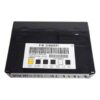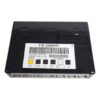Restore Your Vehicle’s Electrical System with a Plug-and-Play BCM
Are you experiencing frustrating and unpredictable electrical issues in your vehicle? Flickering lights, malfunctioning power windows, a security system that acts up, or strange warning lights on your dash are all common signs of a failing Body Control Module (BCM). The BCM is the central command center for your car’s body electronics, and when it fails, it can make your vehicle feel unreliable. This is the direct, hassle-free solution to restore full functionality and your peace of mind.
Common Symptoms & Your Solution
A faulty BCM can cause a wide range of problems that seem unrelated. If you’re noticing any of the following, this pre-programmed module is your answer:
- Intermittent or non-working power windows, door locks, or interior lights
- Erratic instrument cluster behavior or warning lights (e.g., security, airbag)
- Problems with the radio, climate control, or remote keyless entry
- Vehicle not starting due to security system confusion (anti-theft)
- Diagnostic Trouble Codes (DTCs) related to communication errors (U-codes)
Instead of paying for expensive diagnostic time and programming fees at a dealership, you can solve the problem yourself. We take the guesswork out of the repair by flashing this high-quality replacement 2006-2011 Buick Lucerne Body Control Module with the latest GM software updates, tailored specifically to your vehicle’s VIN.
Features & Benefits
- ✔ Pre-Programmed to Your VIN: This module arrives ready for installation, saving you a mandatory and costly trip to the dealership for programming.
- ✔ Latest GM Software Updates: We flash the unit with the newest software available, ensuring optimal performance, compatibility, and efficiency.
- ✔ Simple Installation: As a direct-fit replacement, it’s designed to be a straightforward swap for your original BCM, often requiring only basic hand tools.
- ✔ No Core Charge Required: You don’t need to worry about extra charges or the hassle of sending your old, faulty part back to us.
- ✔ Wide GM Vehicle Compatibility: While perfect for the Lucerne, this module also fits an extensive range of GM cars, trucks, and SUVs, making it a versatile and reliable solution.
- ✔ Confidence in Your Purchase: This unit is backed by our one-year replacement warranty.
Expert Insight: The Brains Behind Your Vehicle’s Comfort
Think of the BCM as the vehicle’s central nervous system for all non-engine related functions. It manages everything from the chime that reminds you to put on your seatbelt to the complex logic that controls your power windows and anti-theft system. When it fails, communication breaks down. A used module from a junkyard won’t work because it’s programmed to a different vehicle’s options and VIN. Our service bridges that gap, providing a component that is electronically identical to a brand-new one from the factory, giving you a reliable and cost-effective path back to a fully functional vehicle.
By ordering this pre-programmed 2006-2011 Buick Lucerne Body Control Module, you are choosing the smartest and most efficient way to fix your vehicle’s electrical gremlins and get back on the road with confidence.
Frequently Asked Questions
Do I need to provide my VIN?
Yes. Providing your Vehicle Identification Number (VIN) at checkout is essential. We use it to load the correct, vehicle-specific software and calibrations onto the module, ensuring it works perfectly with your car’s features right out of the box.
Is this a simple plug-and-play installation?
For most vehicles, yes. The module is programmed to your VIN, which handles the most complex part of the job. In some cases, minor relearn procedures, such as for the Brake Pedal Position Sensor or Airbag System (SDM), may be required. These procedures are noted in the product details and can often be performed with a capable diagnostic tool.
What happens if my airbag light is on after installation?
If the airbag warning light is on, it means the new BCM needs to be synced with the vehicle’s existing airbag system. A professional scan tool is required to perform the ‘Setup SDM Primary Key in BCM’ procedure. This is a standard security step for many GM vehicles.
How is this different from a part from a junkyard?
A BCM from a junkyard is programmed for the donor vehicle’s specific options and VIN. It will not function correctly in your car and can even cause new problems. Our modules are professionally programmed specifically for YOUR vehicle, ensuring a correct and reliable repair.
Will this fix my specific electrical problem?
This module will resolve issues directly caused by a failing BCM. While the symptoms listed are very common indicators, we always recommend proper vehicle diagnostics to confirm the BCM is the root cause of your problem before ordering.


